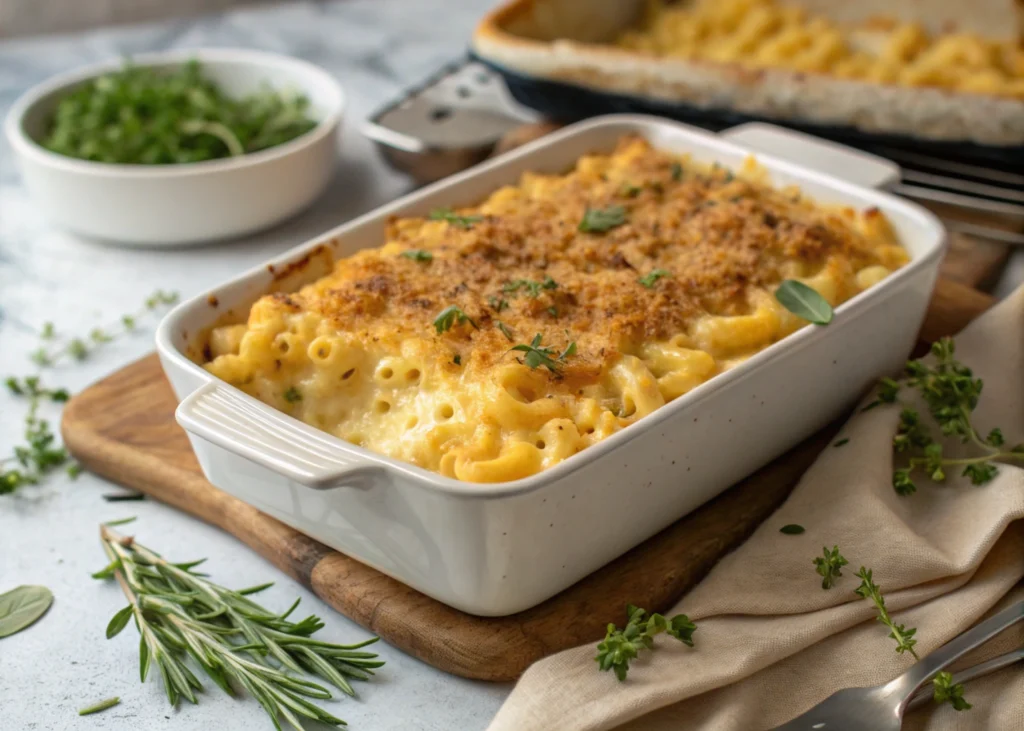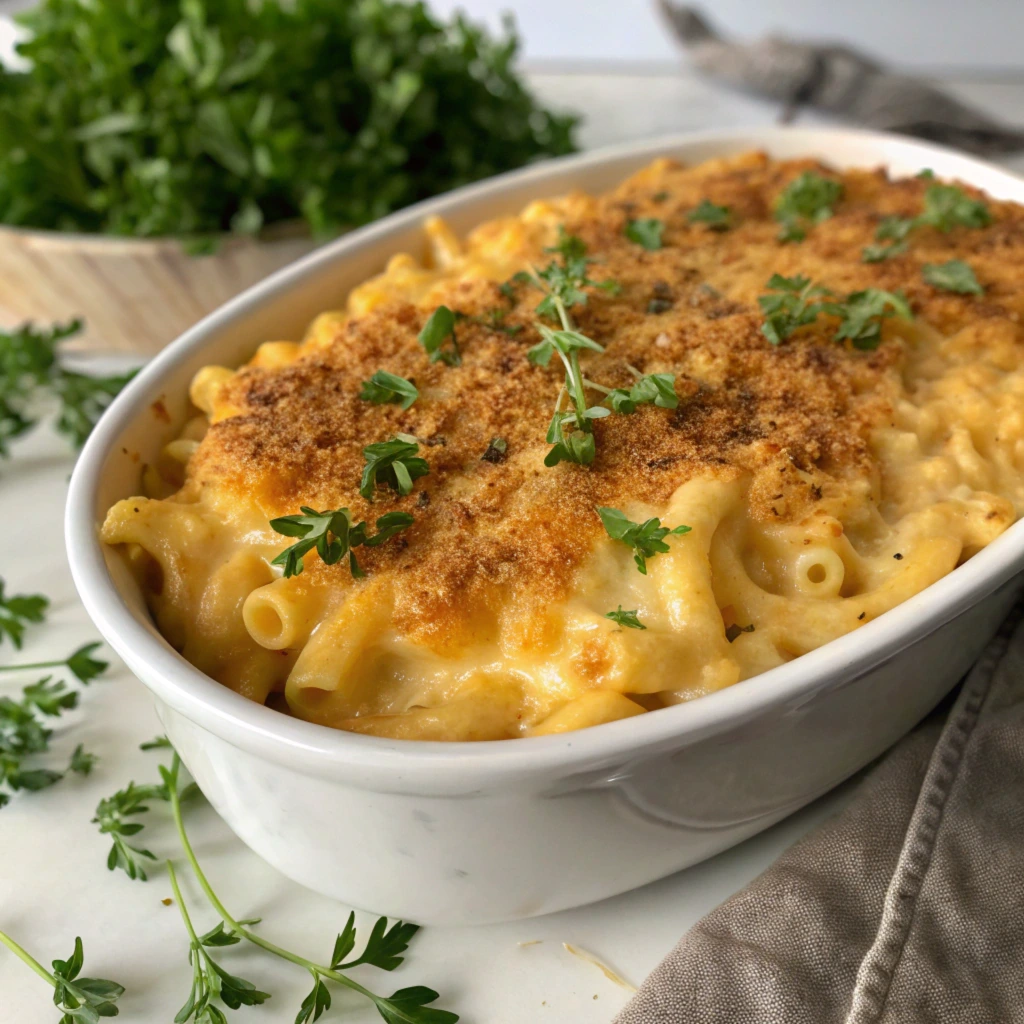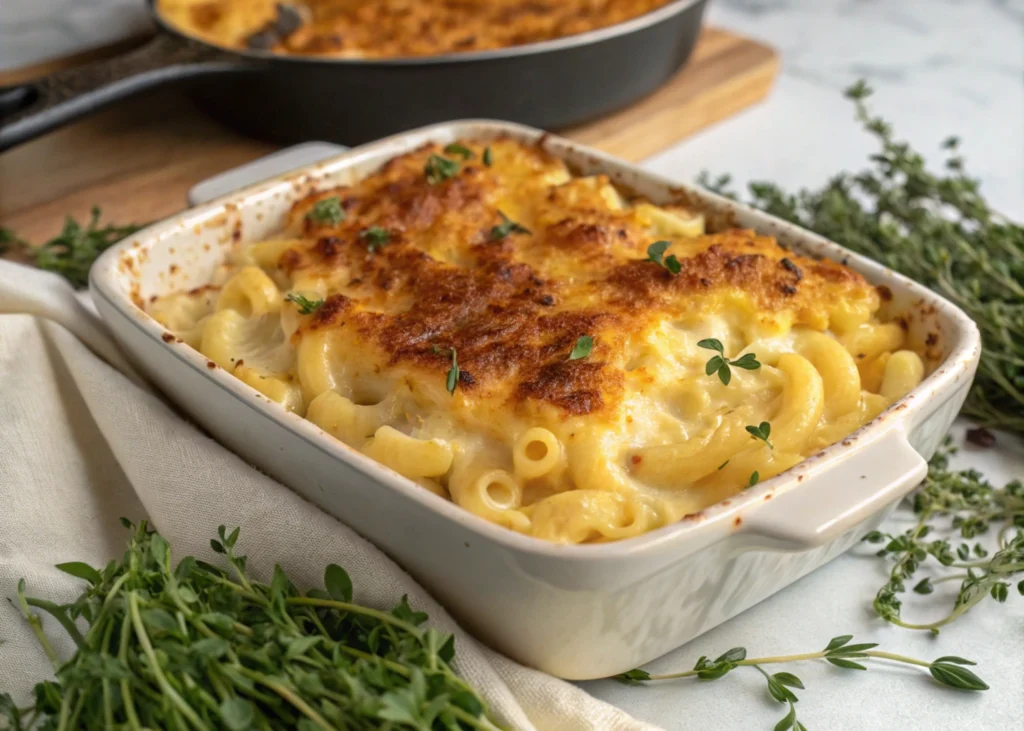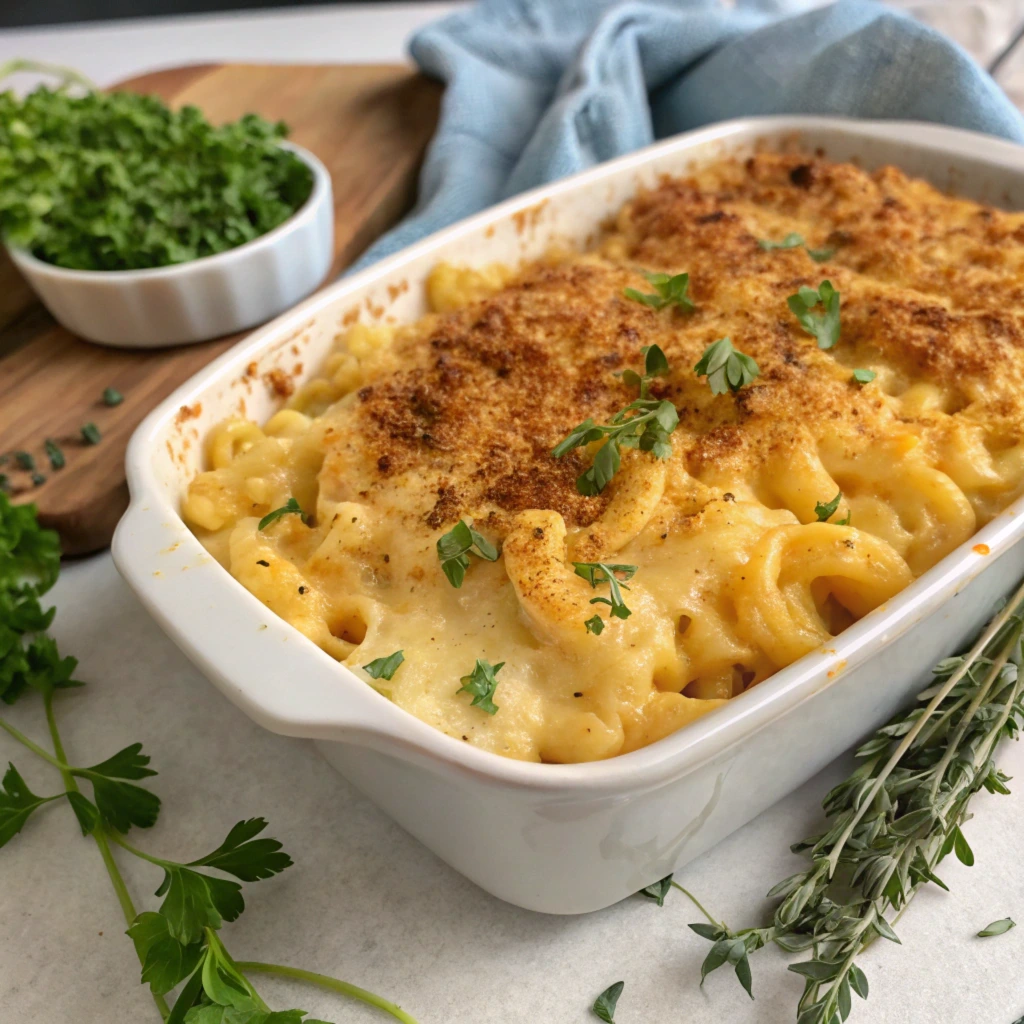Mac and cheese is a classic comfort food that brings together creamy cheese, tender pasta, and a rich, savory sauce. However, making it the perfect dish requires attention to detail and avoiding common mistakes. If you’re asking yourself, what not to do when making mac and cheese? we’ve got you covered. In this guide, we’ll walk you through the essential steps to avoid pitfalls and create a dish that’s creamy, flavorful, and utterly delicious.
Skipping the Roux
Why Roux is Essential for Creamy Mac and Cheese
One of the most crucial steps in making mac and cheese is creating a roux—a blend of butter and flour that serves as the base for your sauce. Without it, your cheese sauce may end up too thin or grainy. Learn the best techniques for making a roux with this three-cheese mac and cheese recipe. Taking this step guarantees a velvety texture that coats your pasta perfectly.
A roux acts as a thickening agent, giving the cheese sauce that perfect, smooth texture. If you opt for a shortcut and omit the roux, your sauce might turn out grainy or watery. It’s a simple step that goes a long way in guaranteeing a velvety texture in your mac and cheese.
How to Make a Perfect Roux Step-by-Step
To make a roux, follow these simple steps:
- Melt 2 tablespoons of butter in a saucepan over medium heat.
- Once melted, add 2 tablespoons of flour and whisk constantly to form a paste.
- Cook for 2-3 minutes to remove the raw flour taste, making sure it doesn’t brown.
- Gradually add your milk, whisking continuously to prevent lumps.
This will give you the foundation for a perfectly creamy sauce that won’t separate or clump.
Using Pre-Shredded Cheese
Why Pre-Shredded Cheese Affects Texture and Taste
While pre-shredded cheese might be convenient, it’s not the best choice for a creamy pasta dish. What should you avoid when making this comfort food? Relying on pre-shredded cheese can lead to a less-than-perfect texture and taste. The preservatives used to keep shredded cheese from clumping can affect its meltability, resulting in a sauce that’s not as smooth or rich.
The texture of your cheese sauce is essential for the perfect creamy pasta dish experience. Specifically, pre-shredded cheese tends to melt unevenly, which often leads to clumps and a grainy consistency. As a result, the sauce may not achieve the smooth, creamy texture that makes this comfort food so irresistible.
Best Alternatives for Freshly Grated Cheese
To avoid this mistake, always opt for freshly grated cheese. Some great cheese options to consider include:
- Sharp cheddar
- Gruyère
- Monterey Jack
- Fontina
Grating your own cheese ensures a smoother, creamier sauce and allows you to control the texture and flavor more effectively.

Overcooking the Pasta
How Overcooked Pasta Ruins the Dish
If you overcook the pasta, you’re setting yourself up for a soggy, mushy cheesy pasta dish. The pasta should be al dente, which means it should have a slight firmness when bitten. What should you avoid when making this comfort food? Overcooking the pasta will lead to it absorbing too much sauce and falling apart during mixing.
Overcooked pasta can also affect the texture of your mac and cheese, making it overly soft and less enjoyable to eat.
Tips for Perfectly Cooked Pasta Every Time
To ensure your pasta is perfectly cooked:
- Boil the pasta according to the package directions, but reduce the cooking time by 1-2 minutes to keep it al dente.
- Stir occasionally to prevent sticking.
- Drain the pasta immediately after cooking to prevent it from becoming too soft.
By following these steps, your pasta will provide the perfect texture to hold the creamy cheese sauce.
Not Seasoning the Sauce
Common Seasoning Mistakes
A bland cheese sauce is a common mistake when making this creamy pasta dish. What should you avoid when preparing it? Forgetting to season your sauce properly. Cheese alone isn’t enough to give the dish a full, rich flavor. It’s essential to incorporate seasonings to balance the richness and bring out the best in your cheese.
Without proper seasoning, the mac and cheese can taste flat, leaving your taste buds wanting more.
Spices and Herbs that Enhance Mac and Cheese Flavor
To add depth to your mac and cheese, use a combination of these spices and herbs:
- Garlic powder
- Onion powder
- Ground mustard
- Paprika
- Freshly ground black pepper
These spices not only complement the cheese but also help elevate the flavor of the sauce, making every bite more delicious.
Adding Cheese Too Quickly
How Adding Cheese Too Fast Can Cause Clumping
One common mistake in preparing this comfort food is adding cheese too quickly. What should you avoid when making it? Dumping all the cheese in at once can lead to clumps and an unevenly melted sauce. The heat can cause the cheese to seize up, making it harder to achieve a smooth consistency.
To avoid this, it’s important to add the cheese gradually and stir it in thoroughly.
Proper Timing for Cheese Incorporation
Here’s how to add cheese properly:
- Lower the heat once your milk and roux mixture is simmering.
- Gradually add small handfuls of cheese, stirring constantly to ensure it melts smoothly into the sauce.
- Continue until all the cheese is incorporated, ensuring a creamy, lump-free sauce.
By taking your time, you’ll get a perfectly smooth, cheesy sauce that coats the pasta beautifully.

Choosing the Wrong Cheese
The Role of Cheese Varieties in Mac and Cheese
Cheese is the heart of mac and cheese, so what not to do when making mac and cheese? Choosing the wrong cheese can make or break the dish. While many cheeses work well in this dish, some are better suited for creating that creamy texture and rich flavor profile.
The cheese you choose significantly impacts the flavor and texture of your dish. Low-quality or processed cheeses often result in a disappointing experience. Instead, combine flavorful options like cheddar, Gruyère, or mozzarella to enhance your sauce. If you’re curious about ideal cheese pairings, explore what three cheeses go well together to refine your recipe.
Cheeses like processed American cheese or low-fat options won’t give you the decadent experience you’re after.
Best Cheese Combinations for Flavor and Texture
For the best mac and cheese, consider using a mix of the following cheeses:
- Cheddar for sharpness and flavor
- Gruyère or Swiss for creaminess
- Mozzarella for meltability
This combination ensures a rich, flavorful sauce with a satisfying texture.
Forgetting to Layer Flavors
How Layering Flavors Makes a Difference
What should you avoid when making mac and cheese? For example, forgetting to layer flavors can result in a less flavorful dish. Layering flavors throughout the cooking process, however, helps build depth and complexity. Moreover, if you add seasoning only at the end, it won’t have time to meld with the sauce, which leads to a one-dimensional flavor profile. As a result, the dish may lack the richness and depth that come from properly layered seasonings.
Layering ensures every component of the dish, from the cheese to the pasta, is well-seasoned and full of flavor.
Techniques for Building Depth in Your Sauce
- Start by sautéing onions and garlic before adding the roux for a rich base.
- Add a splash of Dijon mustard or Worcestershire sauce to the sauce to enhance the cheese’s flavor.
- Top your mac and cheese with fresh herbs or a dash of hot sauce for a burst of flavor.
These small additions will transform your mac and cheese into a dish full of layers and complexity.

Ignoring Texture Variations
Why Balancing Creamy, Crunchy, and Chewy Textures Matters
What should you avoid when making mac and cheese? For instance, ignoring texture variations can lead to a flat, unappealing dish. In fact, the balance between creamy, crunchy, and chewy textures is what makes mac and cheese truly satisfying. Without this contrast, a purely creamy dish can feel heavy and monotonous, lacking the depth and enjoyment that different textures bring.
By adding a mix of textures, you enhance the eating experience.
Toppings that Add Crunch to Mac and Cheese
To achieve the perfect balance, consider adding these crunchy toppings:
- Panko breadcrumbs
- Crushed crackers
- Fried onions
These toppings add a delightful crunch that complements the creamy pasta and sauce.
Overlooking Proper Tools
Must-Have Tools for Hassle-Free Mac and Cheese Preparation
The right tools can make the mac and cheese process smoother and more efficient. What not to do when making mac and cheese? Forgetting to use the right equipment. A heavy-bottomed saucepan helps prevent the sauce from burning, while a good whisk ensures smooth incorporation of ingredients.
Using the wrong tools can lead to uneven cooking and extra cleaning.
How to Avoid Equipment-Related Mistakes
- Invest in a quality saucepan that distributes heat evenly.
- Use a sturdy whisk to prevent clumping when mixing the sauce.
- A large pot is essential for boiling pasta without overcrowding.
By using the correct equipment, you’ll not only have better control over the cooking process, but you’ll also ensure a more consistent and successful final result. Consequently, the right tools can make a significant difference in the outcome of your dish.
Baking Without a Crust
Why a Golden Crust Enhances Baked Mac and Cheese
Baked mac and cheese is often even better than its stovetop counterpart, but what not to do when making mac and cheese? Baking without a crust can leave your dish feeling incomplete. The crispy, golden topping adds flavor and texture contrast, making it irresistible.
Without a crust, the dish can feel one-dimensional.
Methods to Achieve the Perfect Crust
For the best crust:
- Top with breadcrumbs and a little extra cheese before baking.
- Bake at 350°F until golden and bubbly, about 15-20 minutes.
- For extra crispiness, broil for 1-2 minutes at the end.
This golden crust adds both flavor and visual appeal.
Skimping on Quality Ingredients
How Ingredient Quality Impacts Taste
The quality of your ingredients is essential for mac and cheese. What not to do when making mac and cheese? Using cheap, low-quality ingredients will negatively impact the taste of your dish. High-quality cheese, fresh pasta, and rich milk create a more flavorful and creamy mac and cheese.
Choosing the best ingredients ensures the best flavor.
Tips for Sourcing High-Quality Mac and Cheese Ingredients
- Choose artisanal or aged cheeses for more complex flavor.
- Opt for high-quality pasta that holds sauce well.
- Use whole milk or heavy cream for a richer sauce.
These small choices elevate the dish and make all the difference.
Forgetting to Taste and Adjust
Importance of Tasting Throughout the Cooking Process
One of the most overlooked steps in making mac and cheese is tasting and adjusting as you go. What not to do when making mac and cheese? Not tasting your dish throughout the cooking process can lead to a final product that’s too salty, bland, or under-seasoned.
Tasting as you go allows you to adjust the seasoning and achieve the perfect balance.
Adjusting Seasonings for a Perfect Final Dish
- Taste your sauce before adding cheese, adjusting salt and pepper as needed.
- Once the cheese is added, taste again, adding more seasoning if necessary.
- If the sauce is too thick, add a bit of milk to achieve the right consistency.
This method ensures your mac and cheese is perfectly seasoned from start to finish.
Making the Sauce Too Thin or Too Thick
How Sauce Consistency Affects the Overall Dish
The consistency of your cheese sauce is critical to mac and cheese success. What not to do when making mac and cheese? Making the sauce too thin or too thick can ruin the texture of the dish. A thin sauce will lack the creaminess you’re looking for, while a thick sauce will overpower the pasta.
Achieving the right consistency is key to getting a perfect mac and cheese.
Troubleshooting Thin or Thick Sauces
- If your sauce is too thin, cook it longer or add a bit more flour to thicken it.
- If your sauce is too thick, add a splash of milk and stir until smooth.
These adjustments will help you achieve the ideal sauce texture.

Serving Immediately After Cooking
Why Resting Time Improves Mac and Cheese
While it might be tempting to serve mac and cheese immediately after cooking, what not to do when making mac and cheese? Serving it too quickly can lead to a runny sauce or poor texture. Resting the dish for a few minutes allows the sauce to set, improving both consistency and flavor.
Allowing the mac and cheese to rest also ensures it’s easier to serve and the flavors meld more effectively.
Tips for Optimal Serving Temperature and Timing
- Let your mac and cheese rest for 5-10 minutes after cooking.
- Reheat any leftovers gently to maintain creaminess.
These simple tips will improve your mac and cheese experience.
Overcomplicating the Recipe
How Adding Too Many Ingredients Can Backfire
Sometimes, less is more. What not to do when making mac and cheese? Overcomplicating the recipe with too many add-ins can overshadow the main flavors. While ingredients like bacon, truffles, or lobster can be delicious, they can also detract from the classic mac and cheese experience.
Keeping the recipe simple allows the cheese and pasta to shine.
Keeping Mac and Cheese Simple Yet Delicious
Stick with the basics: cheese, pasta, and a creamy sauce. From there, you can experiment with a few extra ingredients, but don’t overwhelm the dish. A straightforward recipe leads to a more satisfying result.
Storing and Reheating Improperly
How to Store Leftovers Without Ruining Texture
Mac and cheese can be a great leftover dish, but what not to do when making mac and cheese? Storing it improperly can ruin its creamy texture. If you store it in the fridge without sealing it properly, the sauce can dry out or become grainy.
The right storage method ensures that your leftovers maintain their quality.
Best Reheating Methods for Maintaining Creaminess
- Store mac and cheese in an airtight container in the fridge for up to 3 days.
- To reheat, add a splash of milk and microwave or heat on the stove over low heat, stirring frequently.
Conclusion:
Making the perfect mac and cheese requires attention to detail and a few key steps to avoid common mistakes. First and foremost, by understanding what not to do when making mac and cheese, you can ensure a creamy, flavorful dish that’s a crowd-pleaser every time. Additionally, from not skipping the roux to selecting the right cheese, every step is essential. Furthermore, seasoning properly is crucial in achieving the perfect balance of textures and flavors. Ultimately, each element plays a significant role in creating a dish that stands out.
Remember to pay attention to the pasta, avoid overcomplicating the recipe, and don’t forget to taste and adjust as you go. With the right tools, quality ingredients, and a little patience, you’ll be able to create a mac and cheese that’s rich, creamy, and satisfying. By following these tips and avoiding these common mistakes, you’ll take your mac and cheese game to the next level. Enjoy every bite!


1 thought on “What not to do when making mac and cheese?”
Comments are closed.